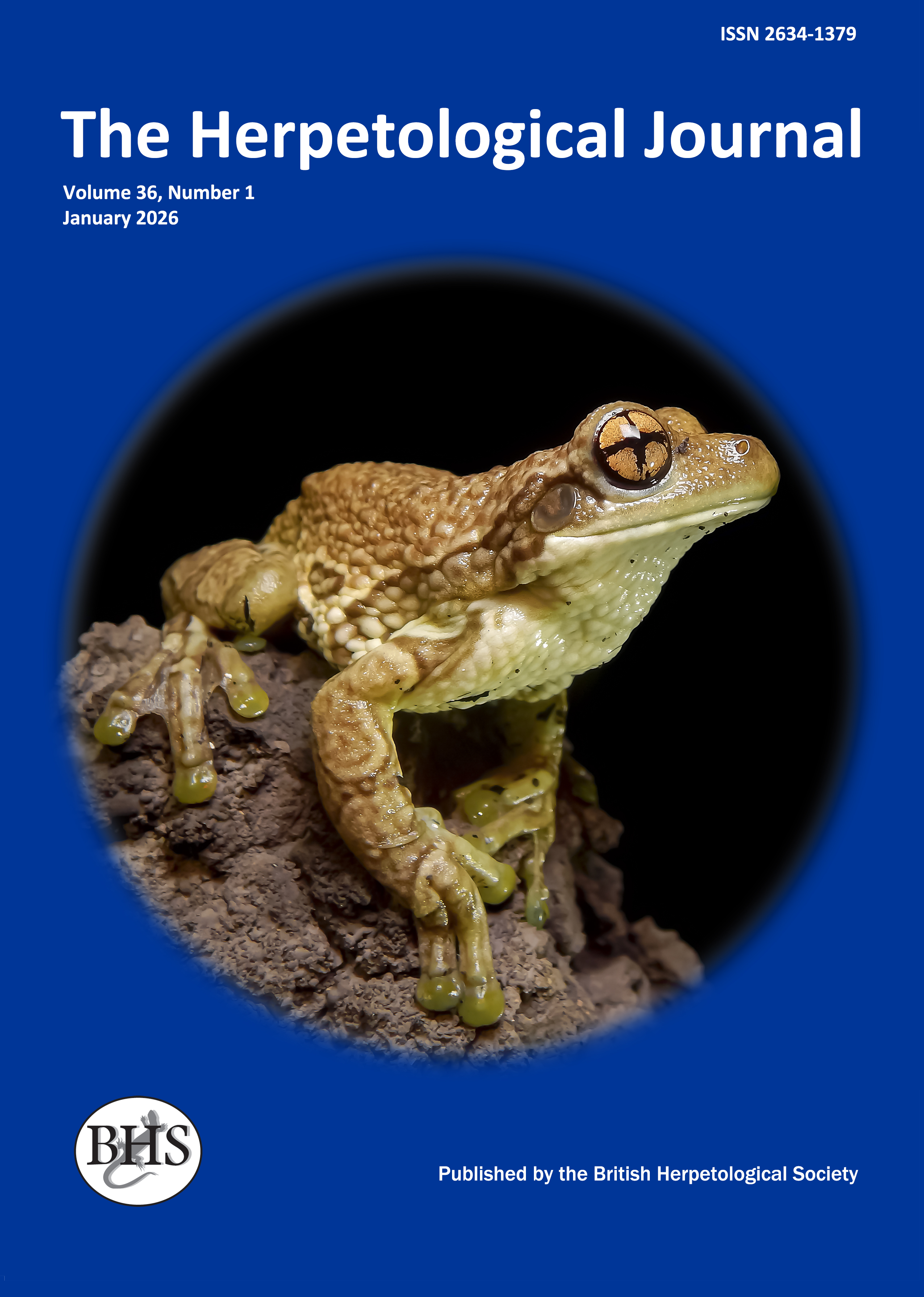
The Herpetological Journal
The Herpetological Journal is the Society's prestigious quarterly scientific journal. Articles are listed in Biological Abstracts, Current Awareness in Biological Sciences,Current Contents, Science Citation Index, and Zoological Record.
ISSN 0268-0130
2023 Impact Factor for the Herpetological Journal is 1.1, with the Journal sitting just below Quartile 2 in Zoology, at percentile 46.9
pdf 07. A review of mono- and bispecific genera of Amphibians worldwide
940 downloads
Open Access
https://doi.org/10.33256/hj30.1.4751
pp. 47-51
Authors: Giovanni Amori, Marco A. Bologna & Luca Luiselli
Abstract: Monospecific and bispecific genera are of particular interest in studies of taxonomic diversity and speciation evolution. Here, the distribution patterns of mono- and bispecific amphibians worldwide are investigated, with some discussion of on the conservation implications also presented. Based on an online database search (available from the American Museum of Natural History, New York), we found that the mean number of mono- and bispecific genera was similar among zoogeographic regions, with a total of 120 mono- (95 Anura, 17 Caudata, 8 Gymnophiona) and 65 bispecific (48 Anura, 10 Caudata, 7 Gymnophiona) genera. Out of 73 known amphibian families worldwide, only 35.6 % of them do not contain any mono- or bispecific genera. The frequency of mono- or bispecific genera by family was not significantly different among Anura, Caudata and Gymnophiona. There was a general tendency for the number of mono- and bispecific genera of amphibians to be positively correlated with the total number of genera in that family. In Anura, there was a preponderance of mono-specific genera in Afrotropical and Neotropical regions. Concerning bispecific genera, there was a clear preponderance in the Neotropical region for anurans. There was a positive correlation between the number of threatened genera (according to the IUCN Red List) in both the mono- and bispecific groups and the relative number of species in each taxon, thus showing that taxonomical speciosity clearly influences the frequency of occurrence of mono- and bispecific taxa in each family and order. In this
regard, Anura dominated in both the number of worldwide described mono- and bispecific taxa as well as in that of the threatened ones according to IUCN Red List.
Keywords: Anura, Caudata, Gymnophiona, monospecific genera, bispecific genera, biogeography, conservation

